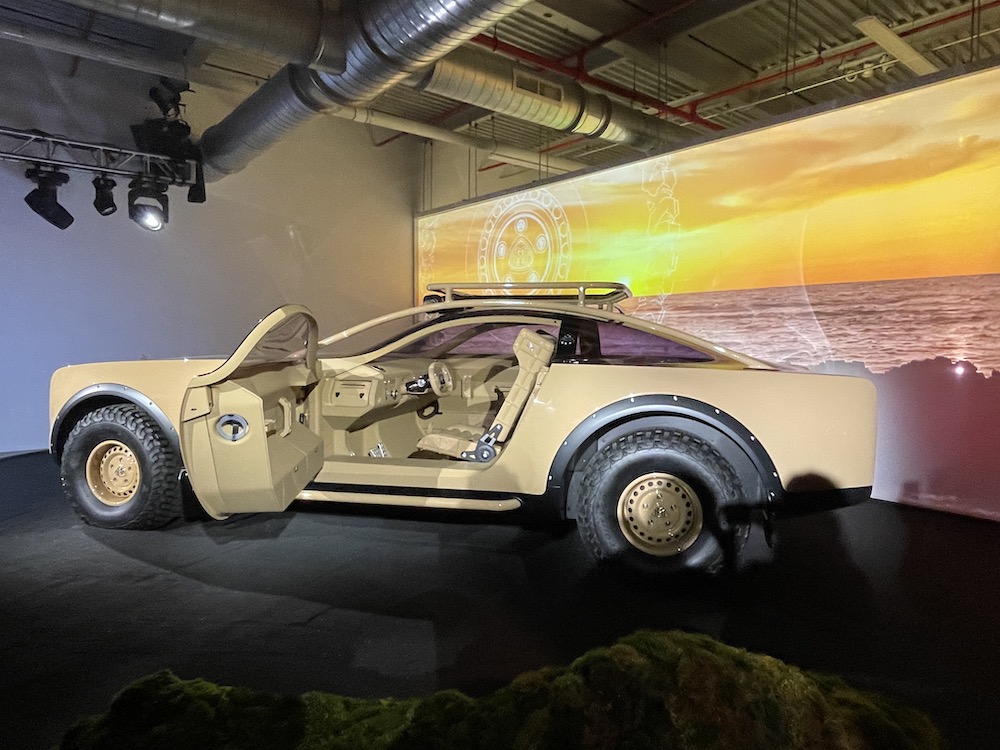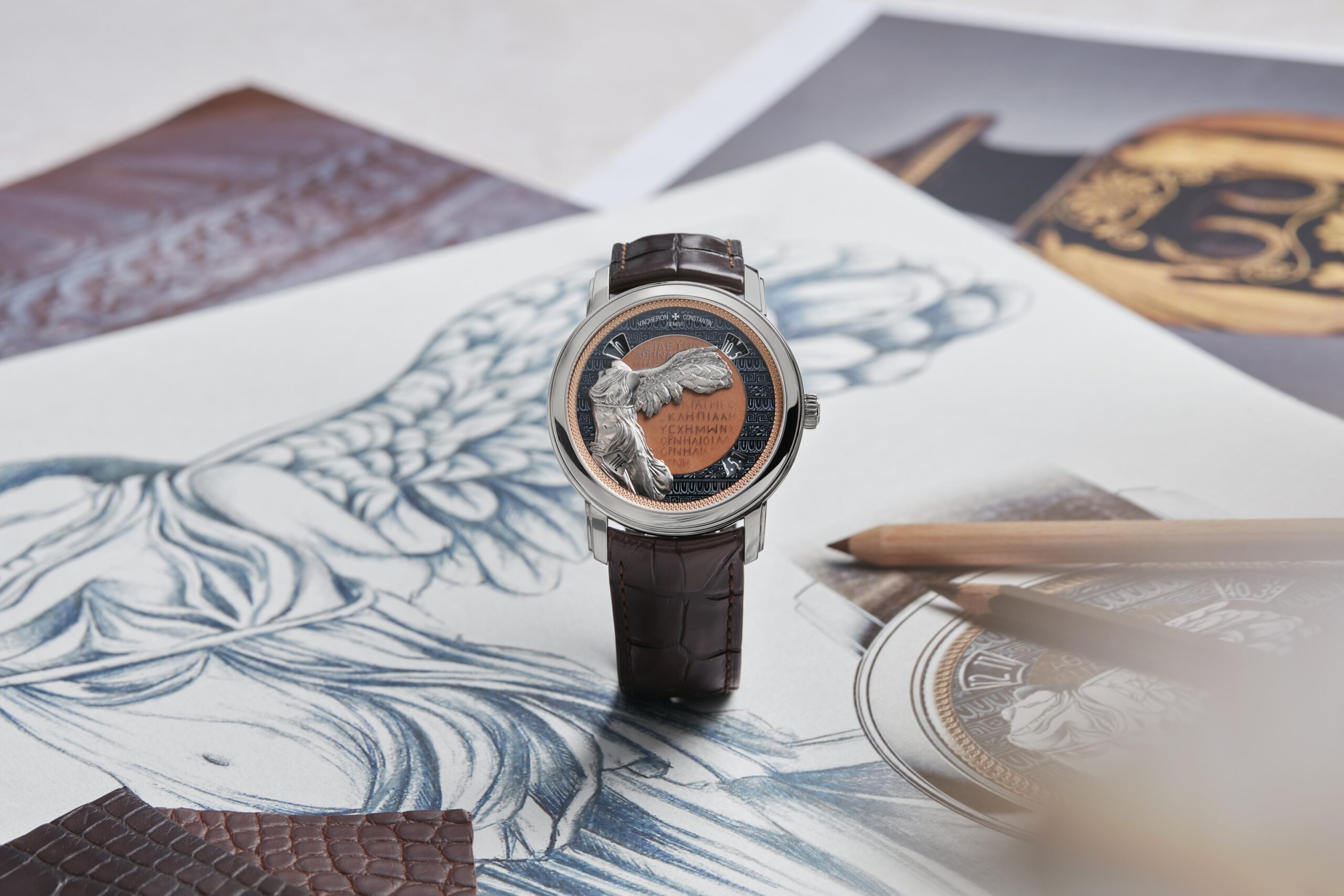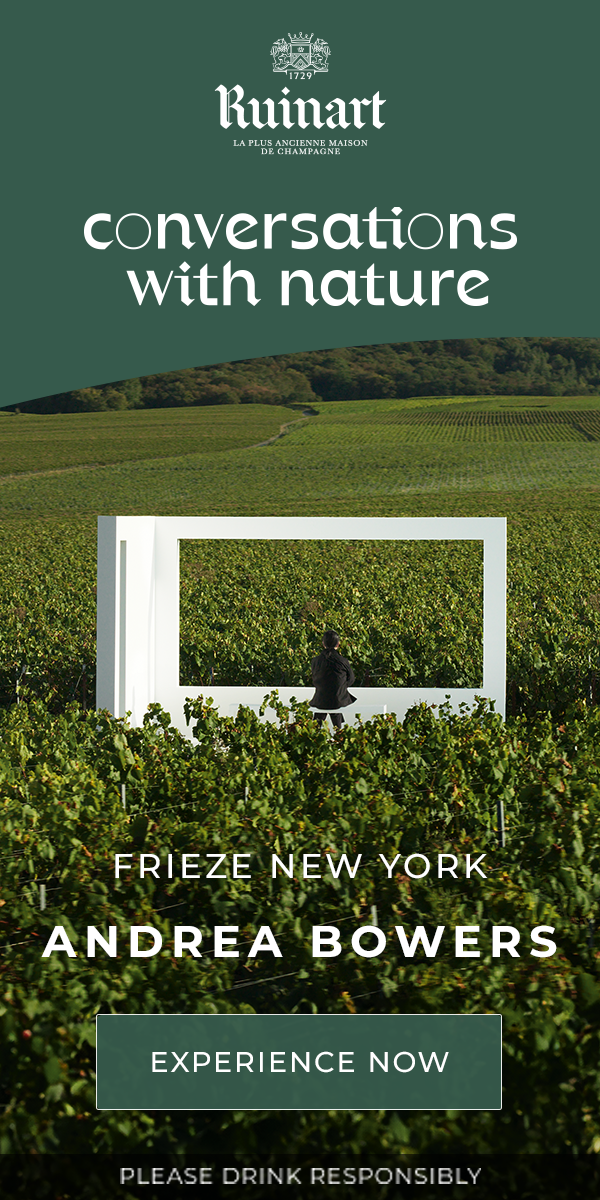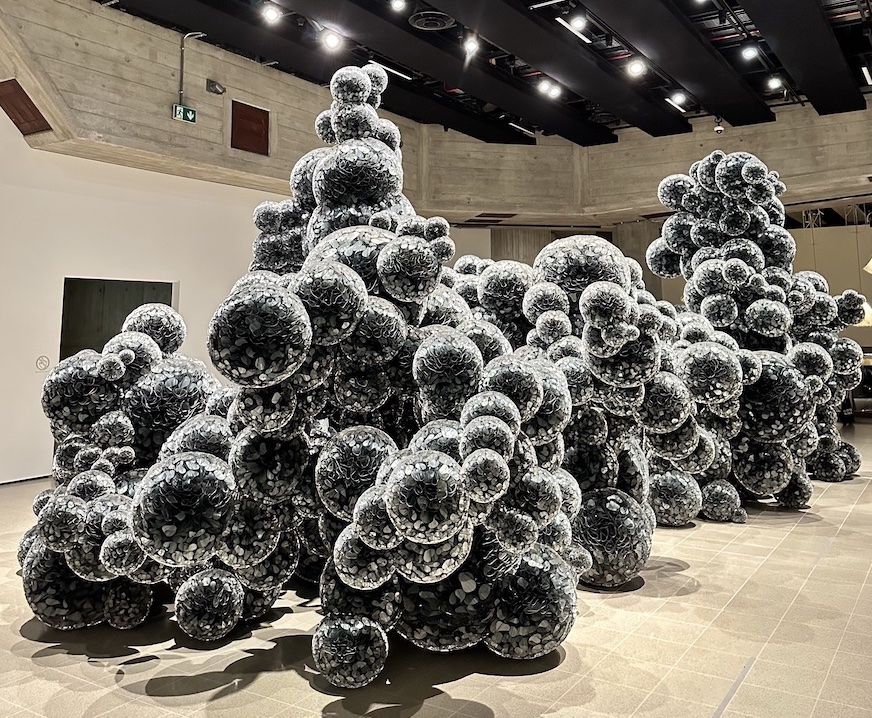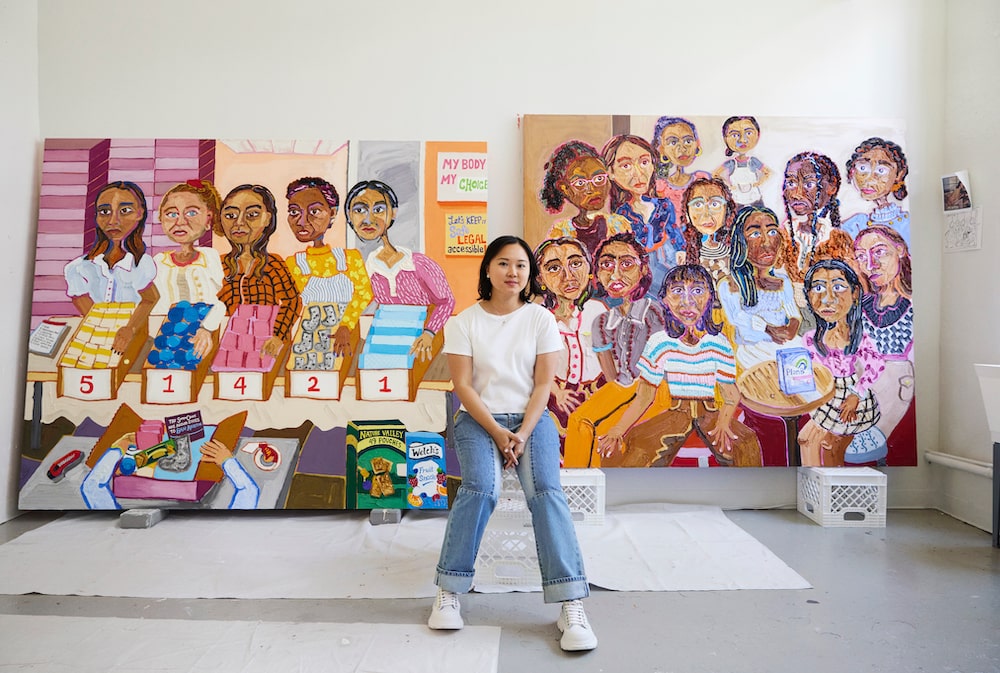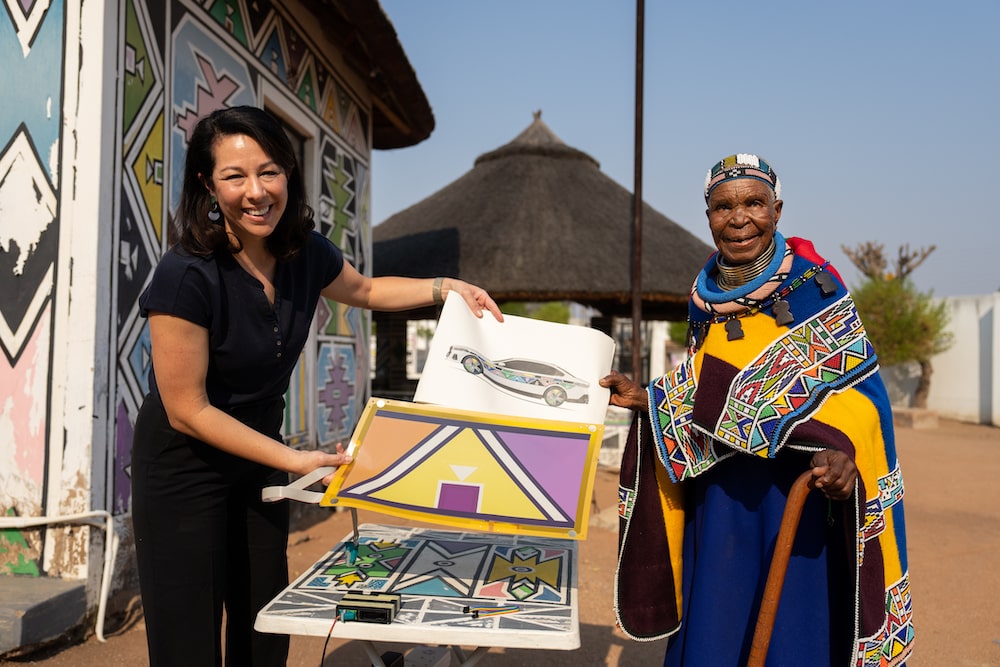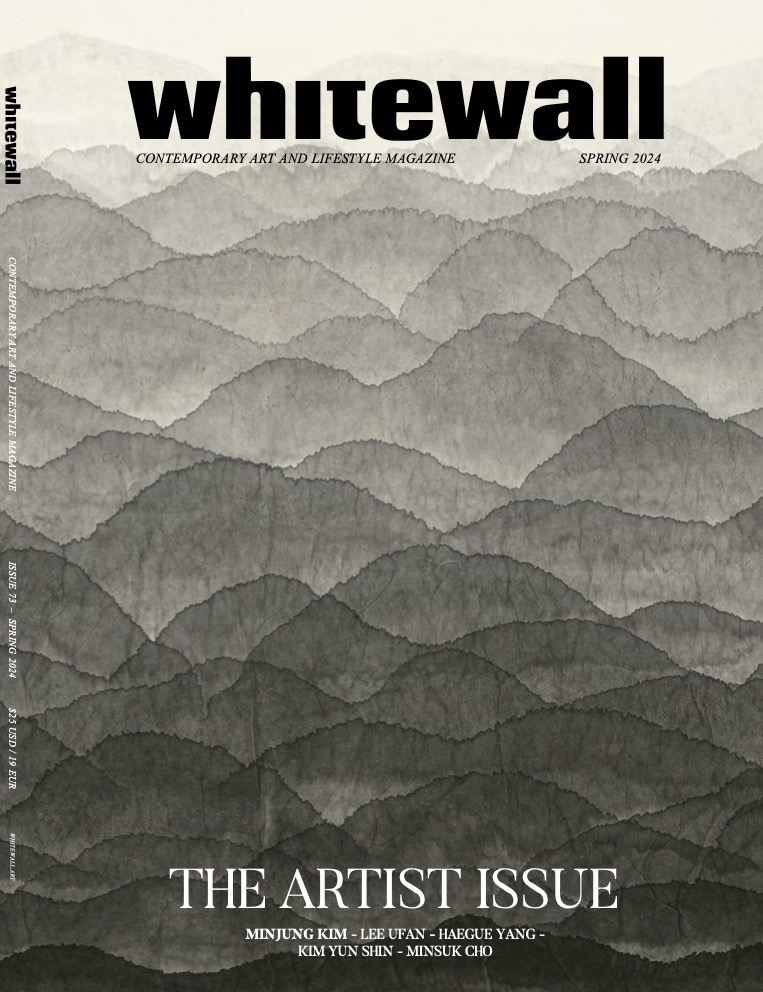On January 18, the second edition of Jaipur Art Week, presented by Public Arts Trust of India (PATI), opened in the historic “Pink City,” unveiling a sweeping show of cultural treasures. Singular art exhibitions and installations, film screenings and conversations, performances, and studio happenings are offered to the public through January 25. In homage to Jaipur’s legacy of providing safe haven for artists and artisans alike, the city’s dynamic Art Week sparks dialogue in multiple locations; design collectives, art galleries, and leading institutions such as Albert Hall Museum, Rajmahal Palace RAAS, and The Open Space Society (TOSS). The not-for-profit, multifaceted event rejoices in the history of Jaipur by both acclaimed and emerging artists from and around Rajasthan, sparking meaningful conversation on the city’s unique and evolving community, architecture, and culture.
“My goal is to reach diverse publics through an art context while building a discourse around urban and heritage structures for critical contemplation through art,” said Sana Rezwan, Principal at PATI and Jaipur Art Week. Participating artists include Bhimanshu Pandel, Zoya Singh, Saraswathi Subbaraman, Shreya Parasrampuria, Nehal Verma, and Rohini Singh Mandawa.
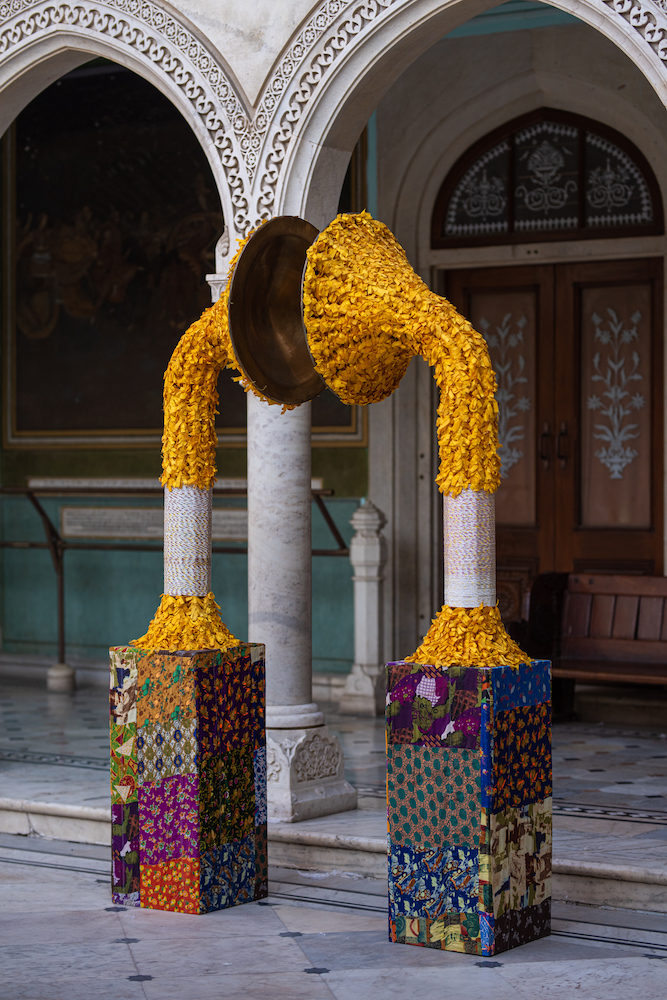
Lochan Upadhyay, “Power of Cloth 2022-B,” 2022, 97 x 26 x 26 in. each, brass, metal and ribbons, found objects – fabric, and ropes (recycled plastic); courtesy of the artist and Albert Museum.
To kick off the event’s opening day, artist Tanushree Sarkar debuted the grand 14-by-10 foot, site-specific installation The skin is Red – Half woman half dream at Orient Occident, within the historic pink candy-colored Rajmahal Palace. Drawing from a background in production design, as well as time spent as a director for films and fashion shows, the dynamic artist experiments with art and architecture in this impressive melange of wrought iron, oil paintings, and paper mache. Deeply inspired by Hawa Mahal—a hypnotically stunning building in Jaipur built in the early 1700s by Maharaja Sawai Jai Singh, and once used as a private space for women of the royal court—Sarkar translates its metaphor of freedom into a luminous, courageous, and otherworldly work of art.
In a landmark exhibition, artist Lochan Upadhya is the first contemporary artist to present at Albert Hall, the oldest museum in Rajasthan. In a delightful combination of found objects, fabric, recycled plastic, rope, and metal, Power of Cloth, first conceived in 2008, is an ongoing investigation of complex social structures and relationships. The colorful and vibrantly patterned site-specific installation resembles a ceremonial entryway that is both culturally significant and obsolete. As a founding member of Sandarbh, an artist-centered initiative supporting public artwork, Upadhya is continually intrigued by the influence of everyday objects on our lives.
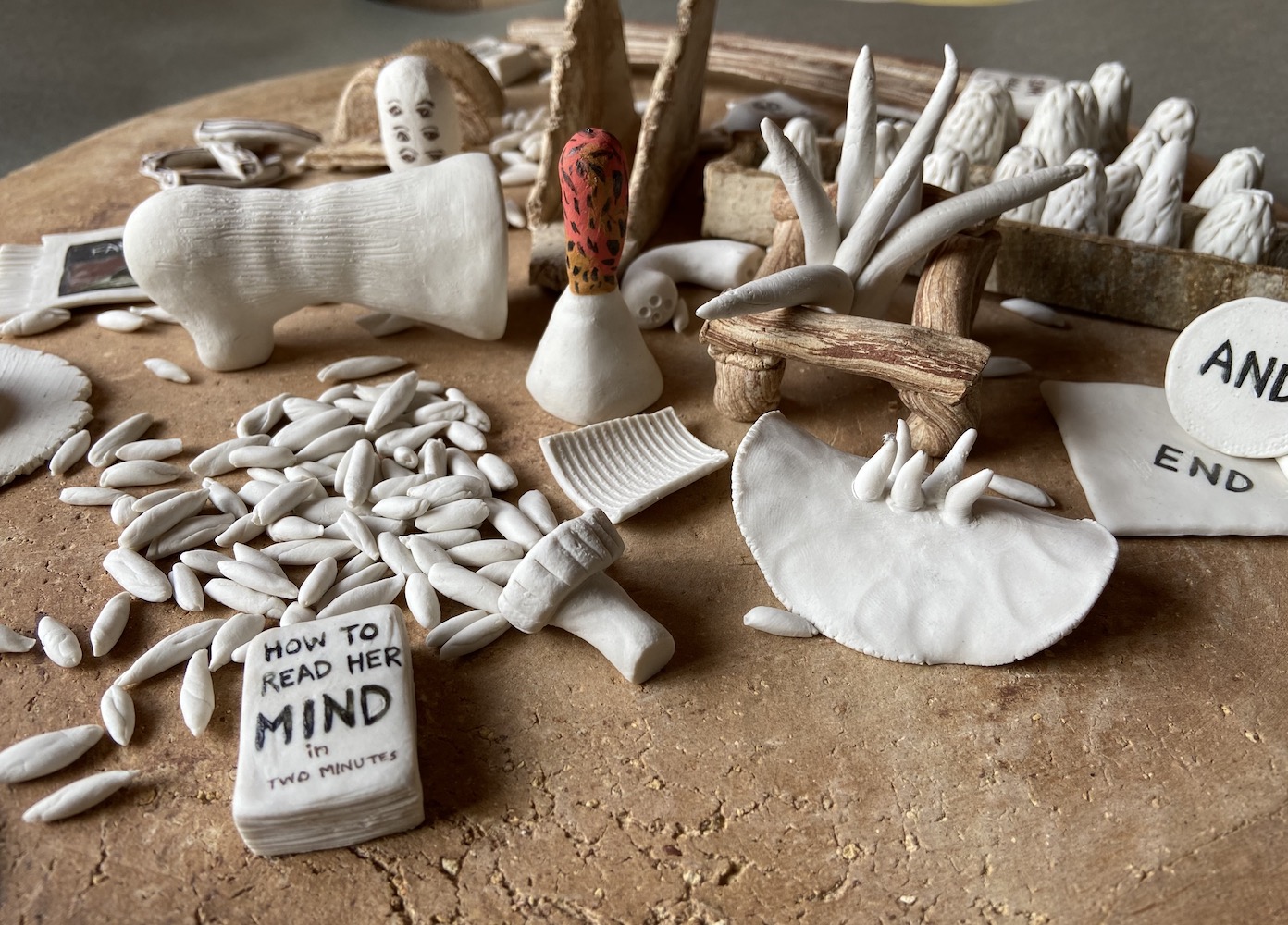
Sarban Chowdhury, “Cultivating chaos,” 2021, 16 x 16 x 4 in., stoneware, porcelain ; courtesy of the artist and Frozen Music.
Conceptual and mixed media artist Shubham Sharma displays an inaugural solo exhibition at Gyan Museum. The artist’s Destroyer is a hanging, rock-like cosmic vessel of raw materials and Hindu mythology, questioning mankind’s purpose, politics, and materialistic desires. On January 19, a group show of storytelling by women artists Devari, Rohini Singh, and Shreya Parasrampuria opened with a panel discussion at Jaipur Rugs. Devari—artist, social activist, PhD scholar, and educator—uses human hair to explore society’s values and lack thereof. Her newest project, Abscission, creatively utilizes hair, twig remnants, and a vivid orange cotton cloth to spotlight the basic human rights struggle for women throughout the world. Hair was donated in solidarity with the women of Iran, then tied to twigs and stitched to a cotton “lugadi”—a traditional veil worn by Rajasthan women. The title of the work refers to an animal’s shedding of a body part, the passive quality of a fallen twig, and the loss of value marked with the cutting of human hair, evoking independence, injury, and oppression.
Artists Pranjal Maheshwari and Sarban Chowdhury take part in “Earthing Conversations” at Frozen Music, a celebration of art and design. Chowdhury’s Cultivating Chaos addresses discord in the human mind and urban landscapes by way of a sculptural stoneware and porcelain artwork. On January 20, artists Ritu & Surya Singh of art collective Wolf Jaipur hosted a special walk and talk through their studio, in addition to showing their creations at Amrapali Museum. Their mixed media work I of the Tyger uses acrylic paint on vintage book covers, in addition to other unique materials such as brass wires and watch scraps. The artist duo worked with craftsman Avaz Mohammad, delving into the origins and magic of early human storytelling. The festive week rounds out with a storytelling workshop for children on Jan 22 by Zoya Singh, a performance piece by Ana Sting on Jan 23, and a conversation with third-generation miniature artist Riyaz Uddin at his atelier and home on January 25.
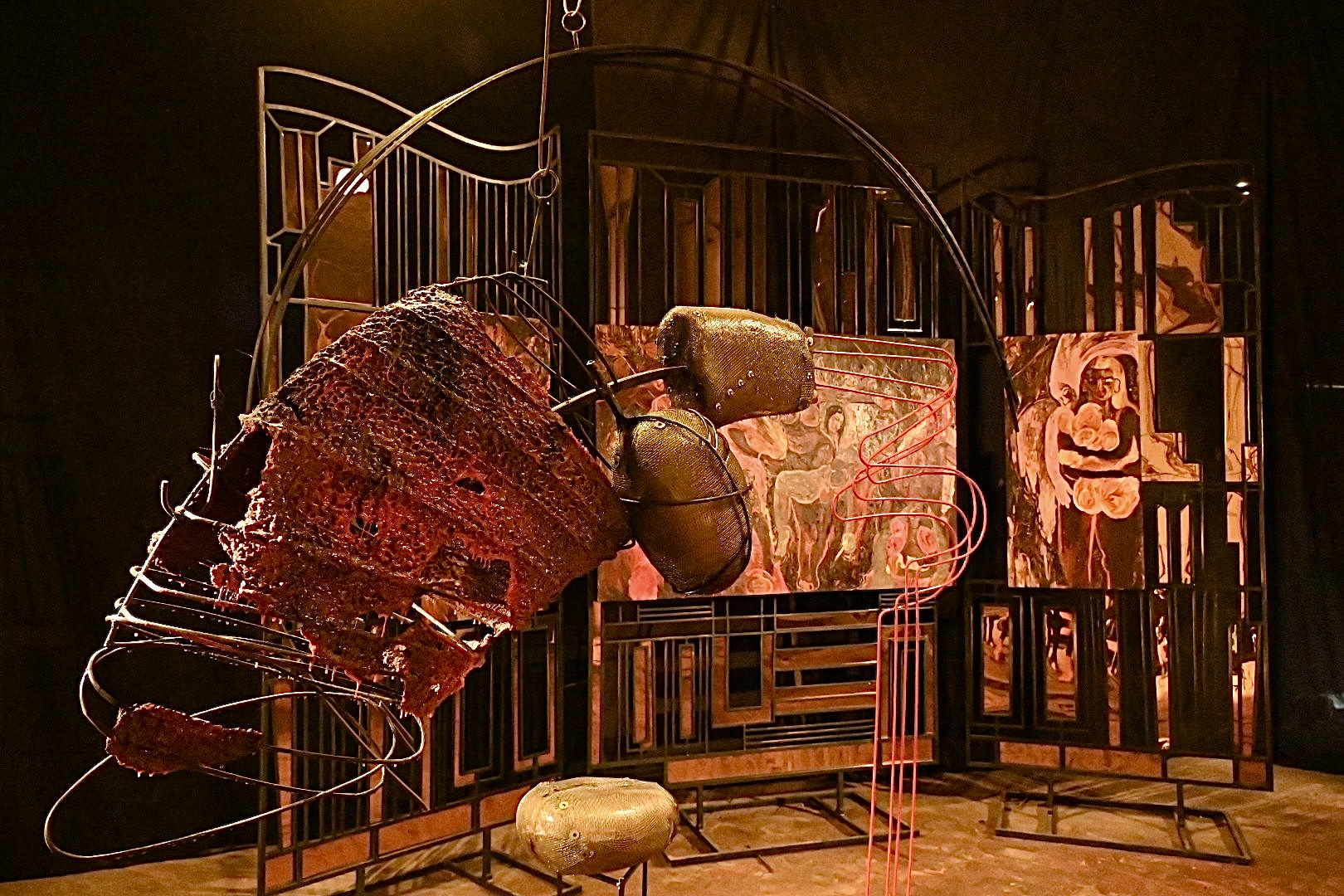
Tanushree Sarkar, “The skin is Red – Half woman half dream,” 2022, 14 x 10 x 10 ft., wrought iron wall with graphic avant garde grill work, oil paintings on canvas, paper mache, iron, fibre and resin; courtesy of the artist and Rajmahal Palace.
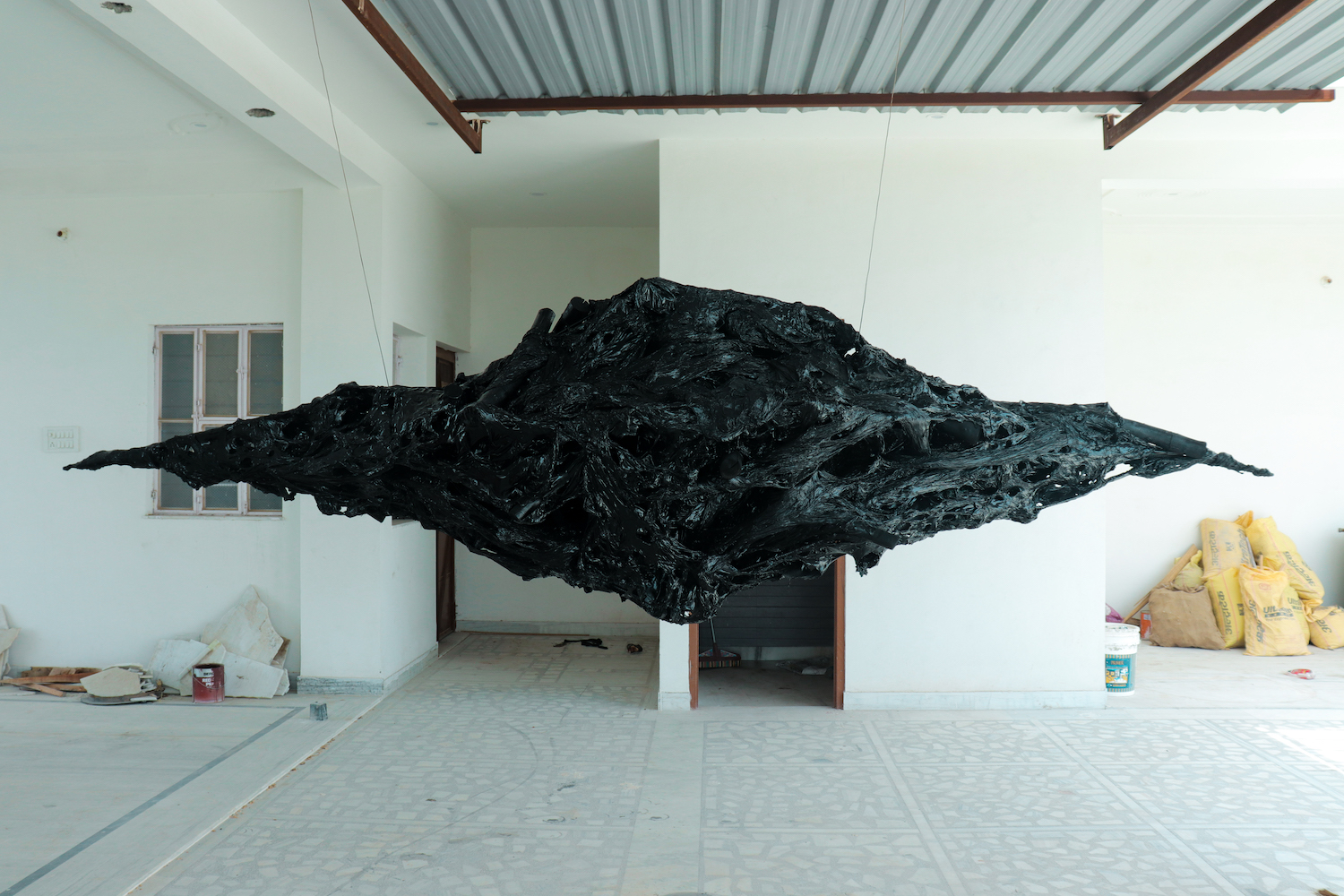
Shubham Sharma, “Destroyer,” 2020-21, 3.5 x 11 x 3.5 ft., mix media; courtesy of the artist and Gyan Museum.
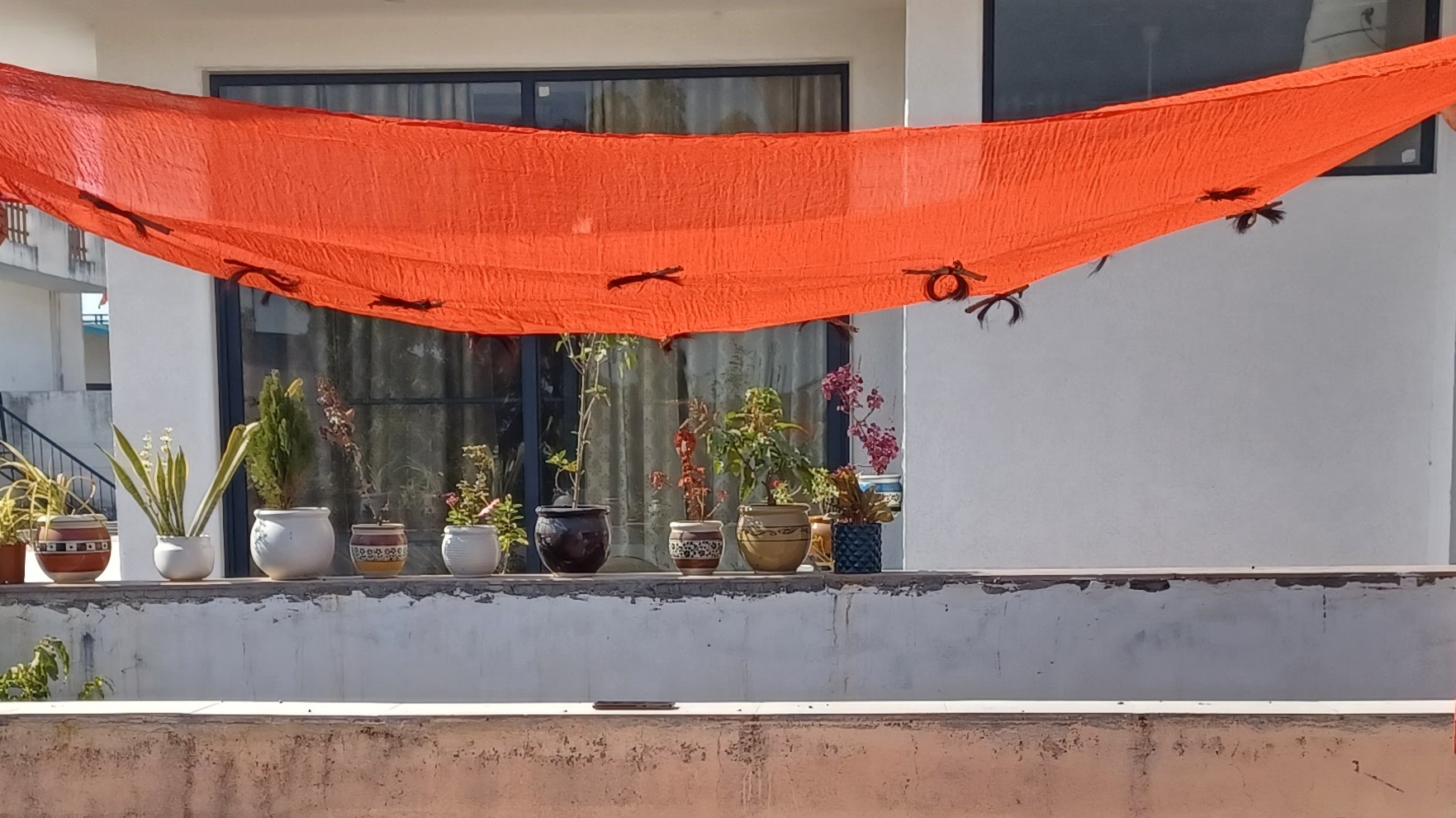
Devari, “Abscission,” 2023, 56 x 93 in., hair, dried twigs, thread, cotton cloth piece (lugadi); courtesy of the artist and Jaipur Rugs.
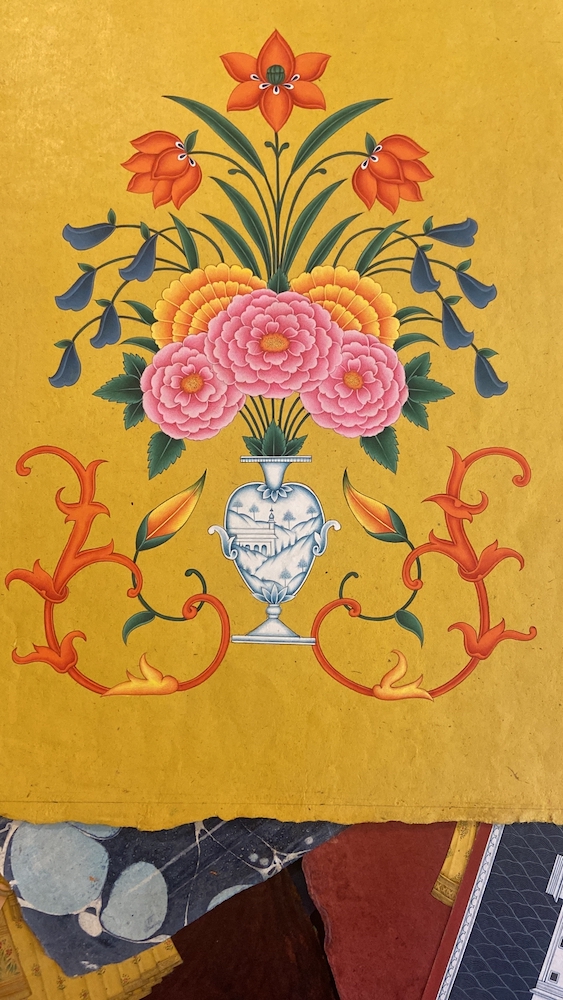
Courtesy of artist Riyaz Uddin.

